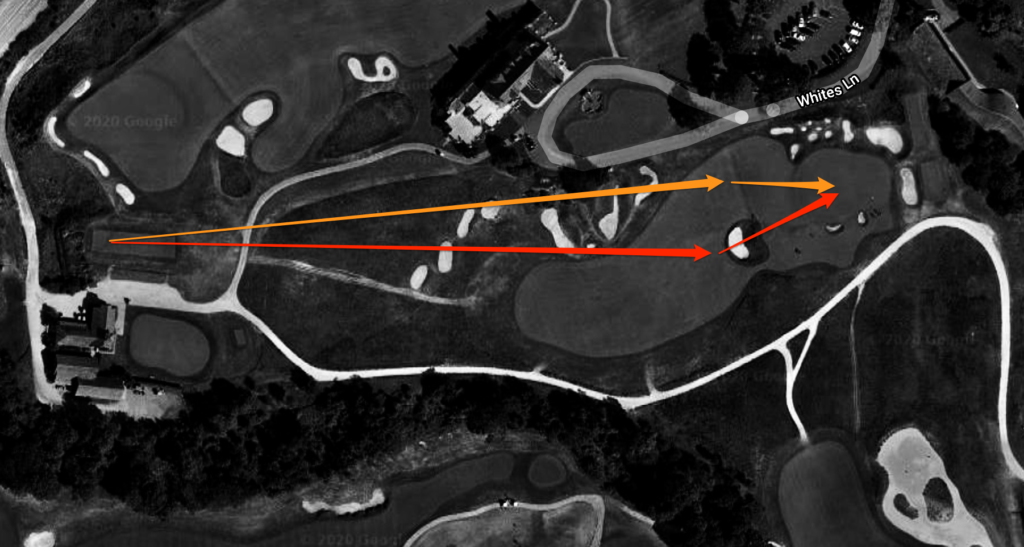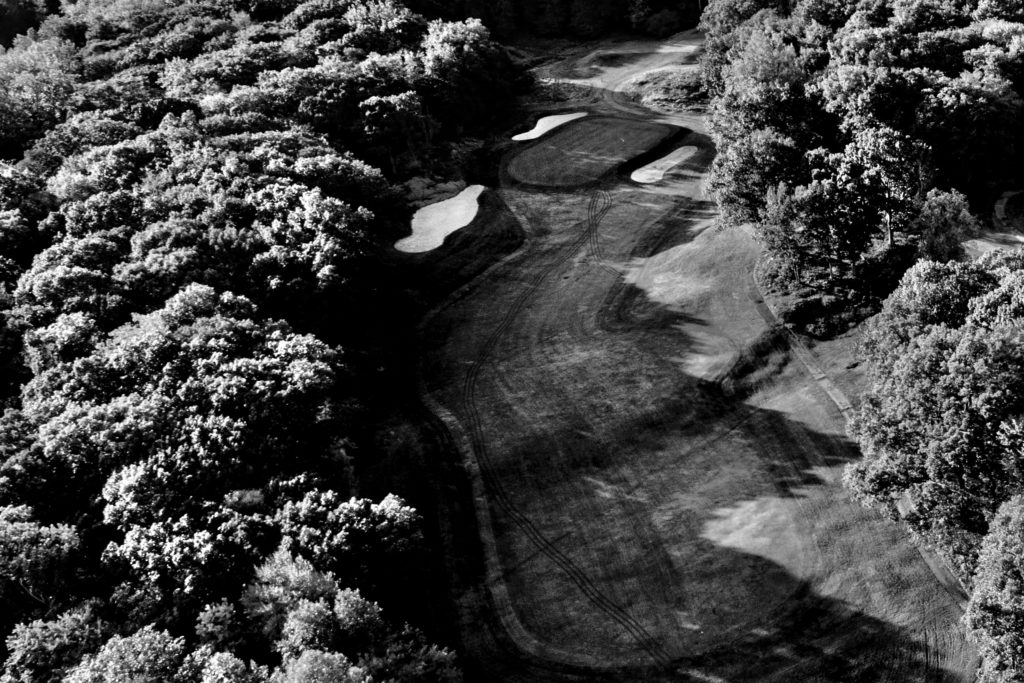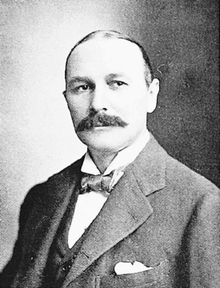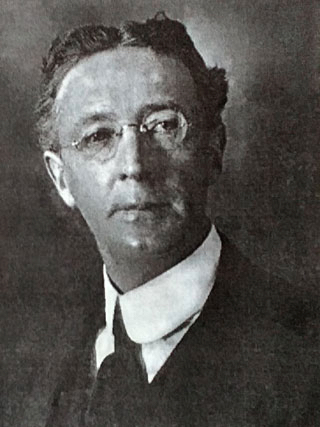“By the way, first hole at Tamarack is a Road Hole.”
It wasn’t a promising preempt to my scheduled phone call with Anthony Pioppi, who—as an author/blogger/podcaster/historian/etc and, most importantly, leader of the Seth Raynor Society—was more equipped than most to shut down new ideas from the fringes of golf architecture analysis.
My intended point of discussion: “What’s a ‘Valley’ hole?”
It’s not that I didn’t know what a “Valley” hole was (and if you don’t, no worries…we’ll look a bit more at this somewhat obscure MacRaynor template), but that I wasn’t sure if Seth Raynor knew what a “Valley” hole was. It’s an absurd thought, I know—that Macdonald’s construction chief wouldn’t have picked up on the concept by implementing Macdonald’s ideas—yet almost every Raynor example of a “Valley” seemed to be tremendously off-base.
And so I reached out to Pioppi, whose aforementioned expertise I hoped would generate some clarity. And, though the road was twisted, I’ve got a theory. We’ll get to Tamarack’s so-called “Road” soon, but let’s start with a primer: What is a “Valley” hole?
Or, at least, what does amateur-hour architecture blog BPBM allege that a “Valley” should be?

What’s A “Valley” Template?
The “Valley” stems from the current opening hole at National Golf Links of America. Although only 330 yards, it’s less of a “gentle handshake” than an accelerated introduction to Macdonald’s strategic golf design. It’s also noteworthy for being one of the few holes at NGLA not based upon an olde-world standard-bearer (i.e. “Redan” or “Long”).
As the title suggests, the general scheme involves driving down into a valley and then back up to the green. Strategy starts at the green and, unlike this post, works its way backwards. The hole is notorious for including arguably the most extreme green at the club right out of the gate, with a pair of deep borderline-pot bunkers greenside right. The ideal approach angle requires driving over a group of fairway bunkers (some visible, some not) along the left side of the fairway, leading to an uphill, head-on look at the green. The less-risky tee shot, to the right, must end up short of a centerline-right bunker, whose backing hump prevents the player from seeing the approach target. Not being able to see this green is…problematic.
That’s the short story. The longer story features just a few more entries for analysis from Macdonald’s pen.
The clearest case was No. 4 at Ocean Links—the nine-hole addendum to Newport Country Club—which Pioppi referred to as “possibly the greatest nine-hole course ever in the United States” in his book, To The Nines. Although not as spot-on as the version at Newport, Mid-Ocean Club’s No. 8 follows the same principles…rewarding a carry of the right hillside with an attractive look at the green, while the safer drive left requires a carry over deep greenside bunkers to a steep green. Both of these holes were named “Valley,” and both were overseen by Seth Raynor during construction.
Which makes it odd Raynor’s own designs named named “Valley” veer so dramatically from the ones he built for Macdonald.

What’s The Difference?
Pioppi used a line during our conversation that will be hugely helpful to you when explaining to friends why the MacRaynor school of template golf is not merely the manufacturing of golf course concepts: “One of Raynor’s attributes that I like is he wasn’t consistent. Well, he wasn’t repetitive. I shouldn’t say he wasn’t consistent.”
Anyone who’s played a multitude of Double Doglegs will recognize this to be true…consistent strategy with unique twists to suit the land. But Raynor’s “Valley”s…they are neither repetitive nor consistent in the strategy required. In short, they vary by extremes. Consider the following examples, all named “Valley”:
Yale’s No. 11 appears similar to Macdonald’s formula, both in terms of length and the act of driving down into a valley and (slightly) back up to the green. The strategy behind the fairway hazards differ greatly however, and the putting surface is strangely at ease following the course’s iconic stretch of greens from Nos. 8 through 10 (The Fried Egg, interestingly, cite the hole as a two-shot Reverse Redan). Pioppi confirmed that Lookout Mountain’s original layout seemed to mimic Valley’s inner row of imposing fairway bunkers…but the length of the hole—430 yards—is a far cry from Macdonald’s established examples. Camargo’s No. 2 hole is completely bonkers when considered through the lens of the “Valley” template; a sharp dogleg Par 5, playing almost entirely uphill…the only “valley” is the one driven over from the tee box.
One set of holes among Raynor’s discography stood out to me, however.

Blue Mound’s “Valley,” No. 14, is so named because it tees off from down in the property’s valley up to the fairway, where a left-side bunker awaits uninformed shots. Clearly just another case where Raynor’s so-called “Valley” was not an example of what I’ve come to accept as a “Valley.” But there’s another hole on the property that seemed so familiar. No. 6, named “Strategy,” involves the slightest of downhill tee shots…a series of three bunkers along the left challenges the landing area for the ideal approach angle, while one large bunker on the right juts in, rising at the back to mar the uphill view to the green. Furthering the muddling effect from the right, a large bunker at the green’s front made the foremost corner of the putting surface invisible, triggering overlong approaches. I was shocked…could this be an unrecognized tweak on Macdonald’s original “Valley” template? A brief hole description on Blue Mound’s site sealed the deal: The turbulent green was reportedly based upon NGLA No. 1 (the course tour on the club’s site has since been removed).
This was a true “Valley,” demonstrating Raynor fully grasped Macdonald’s opener at NGLA and had built his own model. But why had he named No. 14 at the same course “Valley”? And why had the rest of Raynor’s “Valley”s also strayed from their predecessor?
This is the point where I contacted Pioppi.

Occam’s Razor…
…would be a great name for a golf template. Pioppi’s answer to my query also fulfill’s Occam’s postulate that the simplest answer is the most likely.
Raynor didn’t name the holes.
The clubs did. Pioppi doesn’t have hard numbers regarding how many holes Raynor may have dubbed himself, but it’s unlikely the architect had a hand in naming most of his work.
It’s such an obvious factor that we’re almost programmed to overlook, because the majority of holes at your local Raynor are named correctly on the scorecard. And that’s simply because the templates these holes are based upon are so popular, it’s near impossible to mistake them.
“The reason you pick up a scorecard and see the Eden and the Redan and the Short is because somebody at the club knew that,” Pioppi explains. “And then they just fit hole names into the rest.”
He notes several examples, however, where hole names don’t add up to the expected template result. Frequently, these naming errors occurred because those responsible didn’t bother to look beyond MacRaynor’s previous titles when compiling their own. Almost every course under the MacRaynor banner included a “Short” Par 3, and it was always the shortest of the bunch, so tossing the title “Short” on a scorecard was no problem. The pair (and Charles Banks) were less consistent in using the “Long” template, so many assumed the “Long” was simply the longest hole on the course, attaching the title without consideration of Hell bunkers et al. “Valley” received similar treatment, because the namesake at NGLA was not nearly as famous as something such as the “Redan,” so the mere presence of a valley within the hole brought forth the “Valley” title.
Another major conversation point (which could be delved into for posts upon posts) is that Macdonald, Raynor and Banks’s dedication to template formula is imperfect. Pioppi doesn’t even like using the term “template,” suggesting it implies forced manufacturing more than creative influence… which led to the email exchange that led off this post: Tamarack’s opening hole is named “Valley.” It’s of a length within my perceived definition of a “Valley” template. It features a centerline-right bunker in the style of NGLA’s. But it also features a distinct “Road” hole green, which in Pioppi’s eyes makes “Road” the more accurate terminology. His research, and that of George Bahto among others, suggests the architect trio placed heightened emphasis on the tendencies of greens before other elements. I don’t 100 percent agree with him, but he’s certainly not wrong. As a reasonable human being, Pioppi could understand my arguments for a “Valley.” Banks simply hybridized a few good ideas from separate templates, and left historic nitpickers such as ourselves to grapple over terminology.
The realistic naming process and how it impacted Raynor’s alleged “Valley” holes makes sense. But it doesn’t explain one other correlation: There are only a few noted examples of Macdonald holes named “Valley”…and they all match the precedent set at NGLA. How did C.B.’s “Valley”s end up accurate and Seth’s a mishmash?


A Modest Theory
First, there’s a likelihood Macdonald went out of his way to name his holes, whereas Raynor did not. Mark Bourgeois, creator of the C.B. Macdonald Timeline Project, has the most reasonable explanation. He suggests the template conceptual origins Macdonald saw abroad weren’t the only Scottish golf tradition C.B. witnessed that Raynor hadn’t.
“Given Macdonald’s power over [NGLA] during that time it’s hard to imagine anyone else supplying those names,” he says. “As to the idea of naming holes rather than simply numbering them, he would have taken that from the practice of UK courses he played and studied.”
Solid logic, which I’d like to build upon if I may.
Charles Blair Macdonald is praised for his innovative golf course architecture, and he would probably accept those acclamations gladly. Aside from inventing the term “architect” to describe the designers of golf courses, he also wrote with much satisfaction about his own work and approach within Scotland’s Gift: Golf. Much in the same way Raynor would unassumingly become Macdonald’s protege, Banks would fall under Raynor’s wing. “Steamshovel,” an English teacher until his golf course design days, would also prove to produce “illuminating writing,” as Pioppi notes in this biographical feature.
Raynor? Not so much. He served as a humble foil to Macdonald’s self-understood importance. He did not publish, and what little writing he left behind comes in the form of letters to clients and clubs. He kept little record of his own work, which has led to many relatively recent “rediscoveries” of his projects. It’s easy to imagine that a club is more likely to celebrate the heritage of its designer when that architect is assured of that heritage’s deservedness. Raynor did not enforce his importance.
Is it presumptive to suggest that a personality such as Macdonald’s would ensure his concepts were properly identified, and appropriate names given accordingly? Or that Raynor slept well knowing he had created something effective, and didn’t see a need to clarify his intent with nominal self-celebration?
Again, much of my conversation with Pioppi revolved around architecture aficionados’ understanding of templates. He may have touched upon something else entirely when he noted “the thing you have to understand about those guys is nothing is in stone with them.” His point, when applied to the design of template-inspired golf holes, is a valuable one. But there may have been something set in stone, at least for Macdonald.
He had a vision for his golf courses, especially at the National Golf Links of America, and he was enthusiastic to share his vision (emphasis on his). He set his philosophy in stone by firmly naming and defining the names of his holes at NGLA, in essence creating a monument to himself and his philosophy.
Raynor had similar vision and philosophies, which he learned much about from Macdonald. He may have simply moved on from projects, however. he did not leave his mark in stone or writing by attaching definitive titles to his creations.
Theoretically, we should rely largely upon Raynor’s signature features and aesthetics to gauge his creative intent. But if we’re being honest, when gauging a hole’s purpose, we also lean heavily upon the crutch that is a hole’s name. And as “Valley” demonstrates, that crutch can be weak. Perhaps it’s upon us as appreciators of golf course architecture to recognize the strength of a great hole—”template”-inspired or not—without needing to anchor it some benchmark.
Perhaps Raynor realized this. And perhaps that’s why he didn’t leave us a collection of titles that would muddle our view of his holes. After all, if Seth Raynor really wanted to muddle our minds, he would do it by adding a high-backed bunker to block our view uphill to a convoluted green.
But maybe that’s just my perception of the “Valley” template.